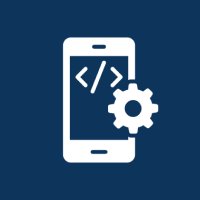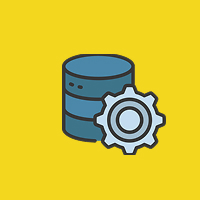In modern web development, application quality is about more than just checking looks—think of it as crafting code that’s not only visually appealing but also scalable, sustainable, and robust. With increasingly complex web applications, developers rely on automated testing to deliver high-quality software with fewer bugs and shorter release cycles. Unit testing is an important part of this effort, especially when developing large-scale applications with Angular.
Among the most trustworthy unit testing tools for Angular are Jasmine, a behavior-driven testing library, and Karma, a flexible and powerful test runner. Together, they create a vast testing landscape that integrates smoothly with Angular applications.
Why Unit Testing Is So Important in Angular Development
Angular is intended to build sophisticated, modular, and dynamic applications. As your codebase grows larger, manual testing becomes cumbersome and prone to errors. Unit testing solves this problem by allowing you to test the isolated components of your application logic so that you can add new features safely without introducing regressions to what already works.
Unit testing provides developers with:
- Early detection of bugs during the development process
- Safe refactoring of code with confidence
- Promote better structure of applications
- Facilitate collaboration
- Include quality checks within CI/CD pipelines
- Technical debt is minimized and the process of maintenance becomes easier by executing unit testing at regular intervals in the entire development cycle.
Jasmine: The Testing Framework
Jasmine is a well-known behavior-driven JavaScript test framework that aims to simplify writing and organizing tests and make them readable. It allows developers to write significant tests that describe the real functionality through an expressive syntax in defining test cases, expectations, and test behaviors.
Jasmine enables you to write tests in terms of suites and specifications. It has strong features such as lifecycle methods (for setup and tear down of tests), spies (for function monitoring), and matchers (for expectations). Its capability to isolate and simulate components makes it an ideal tool for the architecture of Angular.
Karma: The Test Runner
Karma, developed by the Angular team, acts as the engine that runs your Jasmine test cases. What sets Karma apart is its ability to execute tests in real browser environments, providing accurate feedback on how the code performs in the actual user context.
Karma always monitors for changes in your code and automatically re-runs tests while developing. It allows running tests on multiple browsers, integrates with test reporting tools, and can be set to run headless for continuous integration pipelines.
Advantages of Karma are:
- Immediate feedback while developing
- Cross-browser testing for compatibility
- Integration with widely used CI/CD tools
- Smooth combination with Jasmine through Angular CLI
Angular’s Built-In Support for Testing
One of the best things about Angular is its built-in support for testing. When you create a project with Angular CLI, it is already pre-configured with Jasmine and Karma, along with boilerplate test files and configurations. This close integration allows developers to start writing tests from the very beginning of a new project.
Angular CLI offers commands to:
- Generate test files for components, services, directives, and pipes
- Run and debug tests with ease
- Monitor code coverage
- Integrate with IDEs and CI tools
Common Targets for Unit Testing in Angular
In order to provide comprehensive test coverage and system integrity, Angular developers typically unit test the following components of the application:
- Components: Test template rendering, event handling, and UI logic.
- Services: Unit test API calls, data conversion, and business logic.
- Directives: Verify custom behavior and DOM manipulation to function as desired.
- Pipes: Verify proper formatting and data transformation of rendered data.
Writing isolated tests for each of these units allows for more effective fault detection and quicker regressions identification.
Best Practices for Successful Angular Unit Testing
1. Write Isolated, Focused Tests
Every test must test a single unit of functionality. Do not test multiple behaviors in a single test.
2. Use Mocks and Spies
Mock out dependencies like services and APIs to produce repeatable, predictable tests. Use Jasmine spies to monitor method calls and data flow.
3. Don’t Test Implementation Details
Your tests should validate what the code does, not the way it does it. This ensures your tests won’t break as a result of small internal changes that won’t impact functionality.
4. Make Testing Part of CI/CD
Use continuous integration pipelines to automate your test suite to catch errors early, provide build stability, and lower manual QA efforts.
5. Keep an Eye and Measure Coverage
Use code coverage tools to identify untested code. Aim for high coverage on critical paths, but prioritize meaningful, high-quality tests over quantity.
Final Thoughts
Testing Angular apps using Jasmine and Karma is not only a technical necessity—it’s a future investment in your codebase. These are two incredibly useful tools that combine to provide an incredibly powerful assurance that your app behaves as desired under various modules, features, and updates.
By creating frequent, individual unit tests and integrating them into your development pipeline, you bring more ability to deliver features faster, more confidently, and with fewer defects to your team. Whether you are an individual developer or an enterprise engineering organization, understanding unit testing in Angular is a key step in developing more stable, more manageable applications.
Contact Us Today













 Database Development
Database Development












































